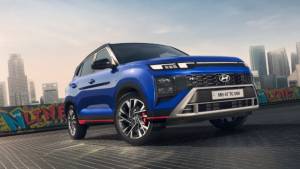2012 Mercedes-Benz B-Class first drive
The first small front-wheel drive Mercedes was a disappointment. And an expensive embarrassment for its maker. I was there when, in 1997, the upright A-class failed the 'elk test', a tight lane-change manoeuvre where it came close to turning over. Mercedes withdrew the car from sale, modified its suspension and fitted electronic stability control and recovered its reputation for safety but there remained the suspicion that its engineers were not comfortable with small cars and front-wheel drive. Even with the enhanced specification, the A-class did not achieve the solidity and refinement for which Mercedes is renowned.
The B-class, a larger relation of the A-class, appeared in 2005. Optimistically labelled Compact Sports Tourer, it was intended for the USA but never went there, which is probably just as well as it also failed to live up to Mercedes' premium brand values.
The nightmare for Mercedes was that although they felt and looked cheap, the A- and B-class were expensive to make. The double-floor construction devised to give the cars a high seating position and the same crash protection as the bigger cars, dictated a powertrain arranged like a slice of cheese so that it could slot under the upper floor. The compact four-cylinder engine lying back at 59 degrees and the special transmission behind it shared nothing with any other cars in the Mercedes range. Mercedes decided that the new generation of these cars should be more conventional: lower, single-floored and transverse-engined with the gearbox alongside, like everyone else's front-wheel drive designs. Determined to expand its small car sales, it called for a new Compact Car Platform (code-named MFA) which could be produced with five different body styles. The first of these is a compact MPV the new B-class. It is a quantum leap from the previous model and Mercedes is confident enough in its prospects that it will be offered in most markets around the world.
The current plan is to assemble the new B-class in India with sales to start from October 2012. We will also get the new A-class which will be launched next year as a sporty low-line hatchback (similar to the concept model revealed at the Shanghai Motor Show in April) and most crucially the SUV based on the MFA platform will be made here (rivalling the X1 and Q3) and finally giving Mercedes the volumes to chase down the number 1 tag it held for so long in India.
In Europe, the new B effectively replaces both the B- and A-class and is designed to appeal to existing owners as well as newcomers to the marque. Although they are not cheap (in the UK, the B-class starts at Rs 19lakh, around the same price at which it will be launched in India), these are the entry models for Mercedes and now, for the first time, they incorporate many of the features and comforts of the larger cars.
The B-class is still a tall car, even if its height has been reduced by 5cm compared with its predecessor, but the lower floor means that the seats can be more upright and increases available cabin space. Outside, the dimensions are much the same but it has a much better stance, accentuated by a body feature line that kicks up through the rear doors and over the wheelarch. The old one was - well, a bit odd - but the new B looks like a proper Mercedes.
It claims to be the most aerodynamically efficient family car, with a drag coefficient of 0.26 (which will be reduced to 0.24 for the forthcoming Eco model with narrower wheels and tyres). These are remarkable figures for a hatchback with a blunt tail.
The platform is pretty standard modern stuff: MacPherson strut front suspension and a four-link independent arrangement at the rear, anti-roll bars, and electric power steering (with the motor located at the rack).
Initially, the engine choice is between a new 1.6-litre four-cylinder turbocharged direct-injection petrol engine which uses some of the design features of the latest Mercedes V6 and V8, and a 1.8-litre version of the familiar CDI diesel from the C-class adapted for transverse installation. Both are available with two different power outputs as B180 and B200: 122 and 156PS for the petrol, 109 and 136PS for the diesel. The transmission choice is between a new, light and compact six-speed manual and a seven-speed dual-clutch automatic transmission that can also be operated manually from paddles behind the steering wheel.
The higher output versions of both engines are preferable, give adequate performance and yet still claim excellent fuel consumption, but more remarkable is their smoothness and refinement. Careful attention to engine mounting and insulation has paid dividends here and contributes to the big-car feel of the new B-Class. All engines come with an automatic stop-start system to save fuel (and CO2) and, unlike some such devices, it works well, re-starting quickly and quietly from a light touch on the clutch pedal.
The seven-speed dual clutch DCT transmission is the better choice, reasonably smooth as an automatic (it has Eco and Sport modes) and crisply responsive to manual shifts from the paddles. The DCT has no central transmission selector; Drive, Neutral, Reverse and Park are selected from a column stalk, as on the Mercedes S-Class.
The new suspension and, particularly, a lower centre of gravity have brought major improvements to the ride and handling and whilst this is not a sporting car, it is now satisfying to drive. The new steering system has the responsive feel that the old one lacked and, when hurrying on, there is little of the disconcerting understeer that blighted the old model.
So the new B-class drives at least as well as the established cars of the type. What Mercedes hopes will put it in a class apart is the way it is presented and the safety and convenience features that have migrated from its larger cars.
Certainly, the look and feel of the interior has the trademark qualities: leather or 'man-made leather' (surely oxymoronic?) and aluminium or wood facia trim, ventilators with chrome surrounds, and electric seat adjusters. A large display screen sits on the top of the facia for clear visibility and is operated by a rotary control alongside the driver's seat. It can show vehicle systems information and of course navigation instructions but is also available with full internet access.
The spacious rear compartment with almost as much space as a standard wheelbase S-Class can include airline-style tables hinged from the front seat backs. A glass roof has two electric blinds and a sliding front section and the rear windows are heat-insulated and dark-tinted. Thankfully, Mercedes has retreated from the headlong dash to provide keyless-go (which it originally introduced on the S-Class); the new B has an old-fashioned key to open the car and start the engine. The panoply of safety devices is available, from Attention Assist (warning signal on the facia), and blind spot warning (lights in the side mirrors) to lane-keeping assist (a judder through the steering wheel) and Pre-Safe, which tightens the safety belts, and closes the windows and sunroof if it senses an accident is imminent.
Most noteworthy is Collision Prevention Assist which is standard on all versions. A radar system, using a transmitter situated behind the three-pointed star in the grille, it works with Adaptive Brake Assist to warn of too high a closing speed with the vehicle in front and modulate braking using the space available, thereby reducing the possibility of being hit by a following vehicle. Mercedes reckons this system could reduce the incidence of rear end accidents by 20 per cent and sees it as significant as fitting ESP to the A-class in 1997, adding that it didn't need an elk test to prompt it
Add to all this the functionality of adjustable rear seats and a large adaptable load area which conceals a spacious compartment beneath, and it is clear that Mercedes has thought long and hard about the B-Class and how to combine the best of the old with greater appeal for a new audience. But it remains a niche model with few direct competitors. In Europe, the maker invites comparison with the high-roofed Volkswagen Golf Plus and Ford C-Max but both of those are cheaper than the B-Class. Ah, yes, it explains, 'The difference is they

are not Mercedes'.
Starts Rs 31.99 Lakhs
2143cc
Automatic
122
300
19.7 Kmpl
Related Stories
Top Stories
Latest Videos
Most Popular
Network18 Updates














